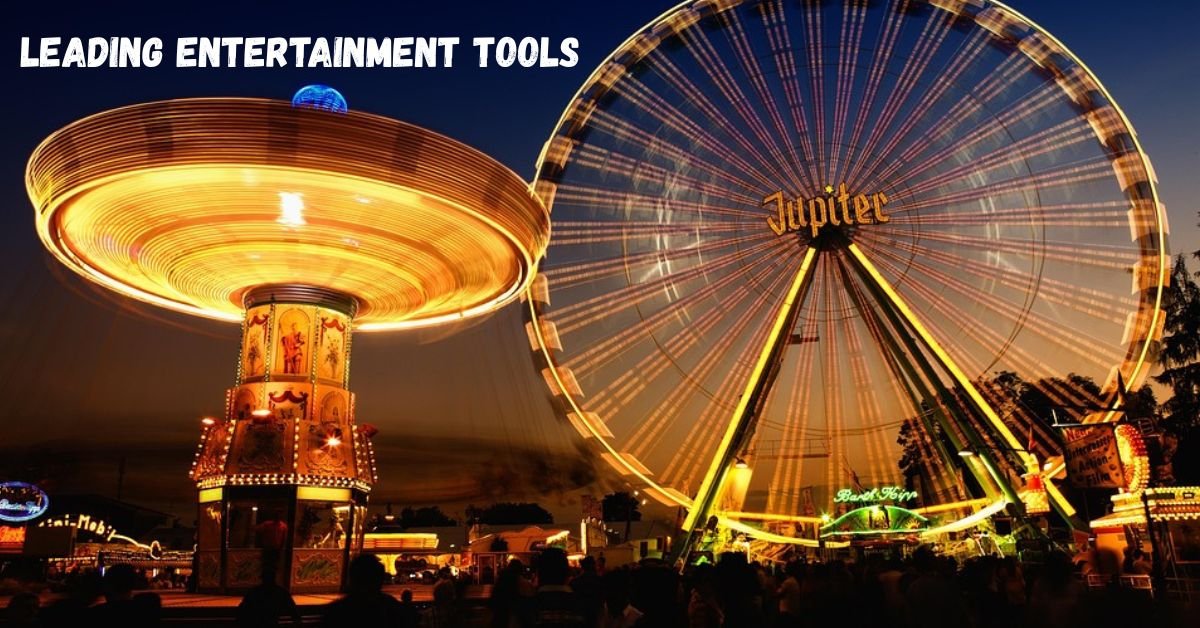Entertainment is evolving rapidly, and at the heart of this evolution are the tools shaping how we consume, create, and interact with content. From AI-generated media to immersive experiences, the leading entertainment tools of 2025 redefine what’s possible in film, gaming, music, and live events. In this guide, we explore the most influential technologies and platforms that are setting new standards in the industry.
What Are Leading Entertainment Tools?
Leading entertainment tools refer to software, hardware, or platforms that drive major innovation in how entertainment is produced and experienced. These tools are used by professionals and consumers alike, offering enhanced creativity, automation, and engagement.
Key Criteria That Define “Leading”:
- Innovation: Use of cutting-edge technology like AI, AR/VR, and real-time rendering.
- Accessibility: Tools that are user-friendly or democratize content creation.
- Impact: Broad adoption across industries (music, film, gaming, etc.).
- Engagement: Proven effectiveness in audience engagement and interaction.
Top 10 Leading Entertainment Tools of 2025
1. Runway ML
- Use Case: AI video editing, content generation.
- Why It Leads: Enables creators to generate and edit video content using text prompts.
- Notable Features: Real-time collaboration, green screen replacement, AI actors.
2. Unreal Engine 5
- Use Case: Real-time rendering for games, films, and virtual production.
- Why It Leads: Delivers photorealistic visuals and efficient production pipelines.
- Notable Features: Lumen for global illumination, Nanite for detail-rich assets.
3. TikTok Creator Tools
- Use Case: Social media content creation.
- Why It Leads: Empowers millions of creators with built-in editing, analytics, and monetization.
- Notable Features: AI-enhanced editing, live shopping, audience insights.
4. Spotify Soundtrap
- Use Case: Collaborative music creation.
- Why It Leads: Allows musicians to co-create music in real-time across borders.
- Notable Features: Auto-tune, beat maker, podcast tools.
5. Oculus Quest 3 (Meta Quest)
- Use Case: VR gaming and immersive media.
- Why It Leads: Wireless, affordable, and integrates with Meta’s metaverse vision.
- Notable Features: Hand tracking, room mapping, fitness and gaming apps.
6. Adobe Firefly
- Use Case: AI-powered design and visual media.
- Why It Leads: Simplifies complex creative tasks using generative AI.
- Notable Features: Text-to-image, vector recoloring, brand-safe content creation.
7. StreamYard
- Use Case: Live streaming and multi-platform broadcasting.
- Why It Leads: Offers plug-and-play professional streaming with audience interaction.
- Notable Features: Screen sharing, overlays, guest invites.
8. Elgato Stream Deck
- Use Case: Streaming control and production automation.
- Why It Leads: Helps creators manage streams with customizable buttons.
- Notable Features: App integrations, macro support, sound effects.
9. AIVA (Artificial Intelligence Virtual Artist)
- Use Case: AI music composition.
- Why It Leads: Composes original scores for films, games, and commercials.
- Notable Features: Emotion-based composing, genre-specific tools.
10. Twitch Extensions
- Use Case: Interactive streaming add-ons.
- Why It Leads: Turns passive viewing into active participation.
- Notable Features: Polls, mini-games, e-commerce integrations.
Comparison Chart: Leading Entertainment Tools in 2025
| Tool | Primary Use | AI Integration | Platform Type | Best For |
|---|---|---|---|---|
| Runway ML | AI video editing | Yes | Web | Filmmakers, content creators |
| Unreal Engine 5 | Game/film production | Yes | Desktop | Studios, game devs |
| TikTok Tools | Short video creation | Yes | Mobile/Web | Influencers, brands |
| Spotify Soundtrap | Music collaboration | Moderate | Web | Musicians, podcasters |
| Oculus Quest 3 | VR experiences | Yes | Hardware | Gamers, VR fans |
| Adobe Firefly | Visual content | Yes | Web/Desktop | Designers, marketers |
| StreamYard | Live streaming | No | Web | Streamers, educators |
| Elgato Stream Deck | Stream automation | No | Hardware | Pro streamers, gamers |
| AIVA | Music composition | Yes | Web | Composers, filmmakers |
| Twitch Extensions | Streaming interactivity | Yes | Web/App | Twitch streamers |
Real-Life Use Cases
- Runway ML was used in a viral short film created entirely by AI tools.
- Unreal Engine 5 powered virtual concerts with millions of viewers.
- Soundtrap facilitated global song collaborations during lockdowns.
- Oculus Quest 3 became a fitness alternative and social platform.
- Twitch Extensions helped raise millions through interactive charity streams.
How to Choose the Right Entertainment Tool
1. Define Your Purpose
Are you producing videos, streaming content, or creating music? The right tool depends on your end goal.
2. Assess Skill Level
Some tools, like Adobe Firefly, cater to beginners. Others, like Unreal Engine 5, require a learning curve.
3. Evaluate Collaboration Needs
If remote teamwork is essential, platforms like StreamYard or Soundtrap shine.
4. Look for Monetization Options
TikTok and Twitch offer built-in monetization, unlike most offline tools.
Final Thoughts
The leading entertainment tools of 2025 are bridging gaps between creators and audiences through automation, interactivity, and immersive experiences. Whether you’re a solo artist, streamer, or studio professional, these innovations are designed to amplify your reach and elevate your craft.
Stay informed, stay creative, and let these tools fuel your entertainment journey.

